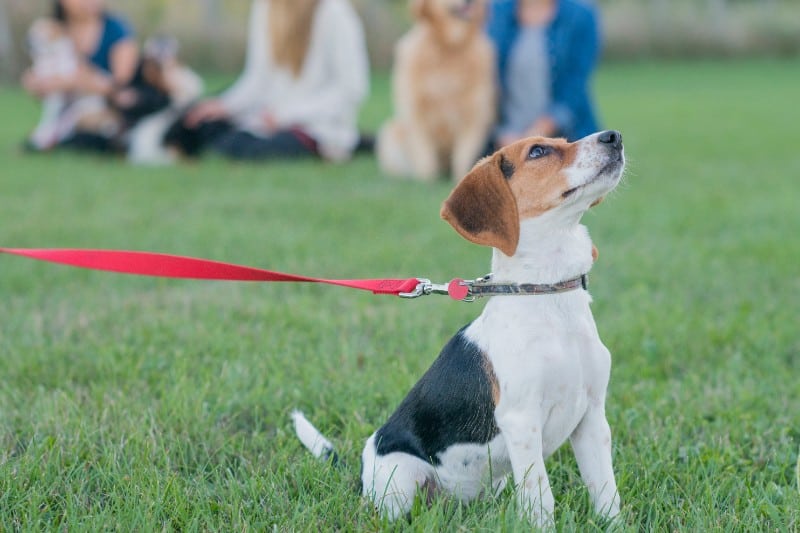National Dog Training Month is Finally Here!

If your dog jumps on everyone who rings the doorbell, barks at every passing truck, or constantly begs for snacks, they’re terrific candidates for behavioral dog training. Of course, all canines – even older and well-behaved pets – can benefit from learning new skills. Not only does dog training provide them with “jobs,” but these meaningful moments prove they can and want to be included in family activities. After all, when your pet behaves, their access to outside opportunities is limitless.
Resolutions Abound
January is National Dog Training Month. Now in its eighth year, the Association of Professional Dog Trainers takes this opportunity to highlight the benefits of dog training. Teaching basic manners and obedience commands like sit, stay, wait, and more, helps dogs become better members of any household. Plus, when they come when called and can walk on a loose leash, dogs experience feelings of success, inclusion, and happiness.
Barriers
Dog training eliminates the barriers that are enforced in the wake of bad behaviors. Indeed, behavioral problems are among the top reasons people surrender animals to shelters. The good news is that with a little time, help, and lots of patience, dogs can learn the best ways to behave and socialize, becoming active participants in the house.
Getting it Right
Successful dog training hinges on positive reinforcement. That means showing your approval when your pet does something “right” while negative behaviors are ignored. Giving unwanted behaviors negative attention can actually make them more prominent. Ignoring certain behaviors, like chewing, can be approached by simply giving a dog a chew toy and walking away.
Dog Training for Every Day
If you want to create good behavior patterns or seek to correct unwanted behaviors, we recommend the following:
- Know what rewards your dog responds to (treats, walks, praise, grooming, etc.).
- Instead of saying “no” to unwanted behaviors, give them a command they recognize, like “sit.”
- Be consistent. For example, don’t allow your pet to sleep on the couch next to you if you want them to stay off the furniture when you aren’t home.
- State commands in the same tone of voice every time.
- Whenever your dog masters one of your commands, reward them.
- Train your dog to sit and stay seated before they’re allowed any physical interaction with another animal or person. Their reward for this good behavior will be the experience itself.
- Stay positive and patient. Dogs need time to understand what pleases you. With positive reinforcement, they learn to be rewarded for good behavior.
- Maintain your dog’s routine. Many unwanted behaviors stem from an unpredictable lifestyle.
Seek Help
Despite the fact that dog training results in a happier, healthier dog, the experience of dog training can be difficult or daunting for many pet owners. Please let us know if you need any advice or support. Our training methods can help you address certain patterns and redirect unwanted behaviors.
Additionally, check out these helpful puppy and dog training tips for more information. Dog training builds mutual trust and can enhance the relationship you have with your dog. When they know what’s expected, they can be wonderful participants. Good luck!
